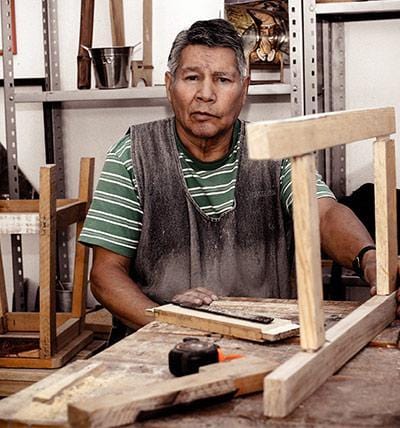Making your kitchen more sustainable means juggling convenience, cost, and environmental responsibility. And, especially for busy families, young couples, and professionals, it’s not always easy to find the right balance.
While most of us want to reduce our carbon footprint and support our planet, we’d prefer to do so without sacrificing the efficiency of our daily routines or breaking the bank.
Fortunately, the path to an eco-friendly kitchen is more accessible than you’d think. With some strategic choices, you can equip your kitchen with sustainable utensils - and make sustainability a core goal within reach.
Choose Bamboo Cutlery Over Plastic
Plastic utensils represent a massive, non-neglectable waste problem. Roughly 40 billion are thrown away each year in the U.S. alone. Even if you use metal cutlery at home, you may still be caught short when you are eating out, when enjoying lunch at the office, or when enjoying a takeaway at home.
Fortunately, new materials and design options make available valid, more sustainable alternative to plastic:
-
Paper

- Metal
- Glass
- Bamboo
- Pasta
- Silicone
Consider these material choices for your cutlery set at home and for utensils such as spatula and knives.
Also consider buying reusable cutlery to take with you when eating out of the house.
Invest in Silicone Storage Bags
Keeping food fresh is key to reducing waste, and, in turn, to reduce the impact on the environment of your lifestyle. That’s where airtight containers, like silicone bags, can significantly extend the life of your food.
Silicone's unique build makes it a long-lasting, sustainable choice and it allows it to create a tight seal, locking in freshness. In other words, this is a simple switch from disposable plastic that can make a big difference.
Another tip to reduce waste? For the occasional fancy meal, don't stock up on unusual or exotic ingredients that'll go to waste. Instead, treat yourself with Factor 75 discount vouchers - these ad hoc services will deliver complete meal kits right on your doorstep, so you can enjoy a meal without running into unnecessary waste.
Select Energy-Efficient Appliances

Kitchens are big energy consumers, using about 41% of a household's electricity, not counting lighting. Given these numbers, opting for energy-efficient appliances can drastically reduce your environmental impact.
To do so, start by choosing products with better energy ratings, or consider shopping for second-hand kitchen appliances to reduce the amount of waste that ends up in landfill.
Use Glass or Stainless Steel Containers
Glass or stainless steel containers are a reliable alternative to plastic. They last longer, are easily recyclable, and don't contaminate your food with chemicals.
By using these, you're not just making a healthier choice for your family but also contributing less to landfill waste. Plus, they can be a style addition, a detail that can give your kitchen a new, sleek look.
Adopt Beeswax Wraps for Food Preservation
Beeswax wraps are a natural solution for keeping food fresh. Unlike plastic wraps and containers, they're reusable, biodegradable, and create an airtight seal - and they can even be composted!
Using beeswax wraps reduces your kitchen's reliance on disposable plastics, aligning with a more sustainable lifestyle. Plus they add a pop of color to your fridge!
Opt for Cast Iron Cookware
Cast iron cookware is the definition of longevity in the kitchen. This material heats evenly, can last generations, and reduces the need for non-stick pans that degrade over time. Plus, cooking with cast iron adds essential iron to your diet - making each meal more nutritious and less impacting on the environment.
Install a Water Filter System
A home water filter system is a game-changer especially if you are not a fan of tap water or you live in an area where tap water isn’t of good quality. Not only does it provide you with clean drinking water, but it also reduces the need for bottled water, significantly cutting down plastic waste.
Wondering whether a tight budget may be a problem? Rest assured that filter systems can range from simple pitchers to more complex under-sink installations, fitting any kitchen's needs and sizes, as well as any budget.
Design an Eco Kitchen From The Ground Up
If you're redesigning your kitchen, collaborating with a professional can be invaluable. They can help you integrate sustainability from the get go, choosing materials and designs that are eco-friendly and efficient. This approach ensures your kitchen not only looks great for years to come but also minimizes its environmental footprint from day one.
ABOUT THE AUTHOR
Nurlana Alasgarli
Content Specialist
Nurlana Alasgarli is a professional copywriter with more than 6 years of creative writing experience. Having lived and experienced all over the world, there are many writing genres that Nurlana follows, including nature, arts and crafts and the outdoors. Nurlana brings life to content creation, captivating her readers.






